Kayak helmets are one of those things that exist on a spectrum for paddlers. Some people, or tour groups, may insist on the use of kayak or rafting helmets. Veteran kayakers may feel comfortable not wearing a helmet in calm water conditions. There is rarely a bad time to wear any piece of safety gear. I know that fumbling for certain items can also feel like a chore. Let's review when to wear a kayaking helmet and reasons to wear your PFD.
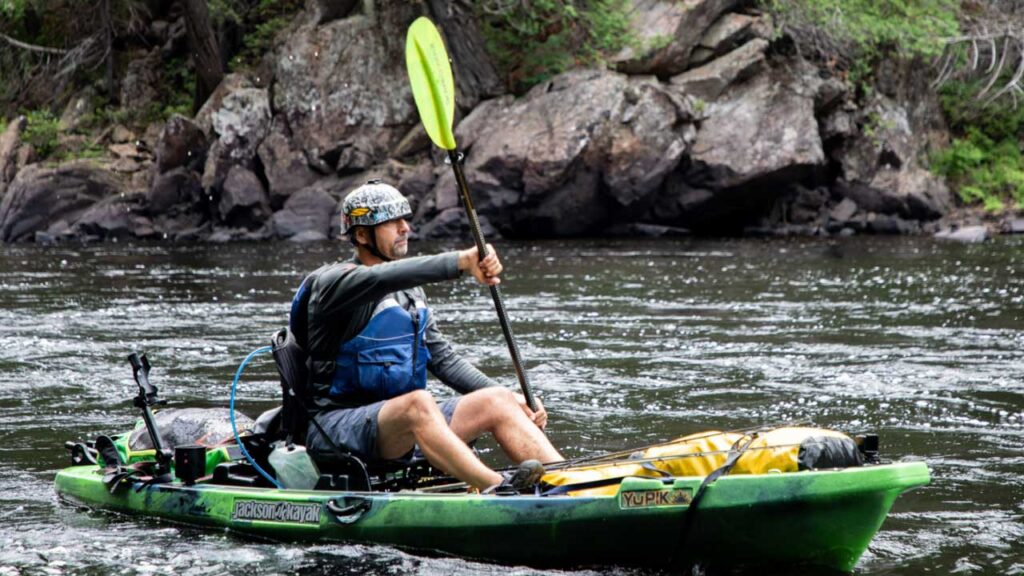
Should you wear a helmet while kayaking?
While the guidelines are straight-forward in terms of PFDs on kayaks, the helmet question can be a bit more subjective. When some paddlers encounter any kind of current, they will always reach for the extra head protection. A good general guide is whitewater kayaking requires the use of head protection.
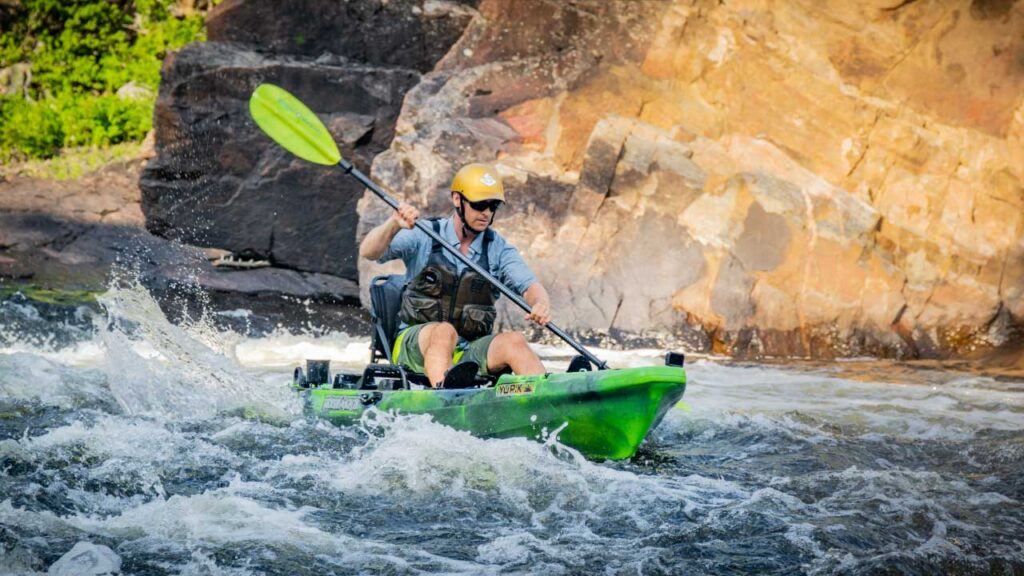
Moving water naturally presents a higher risk of flipping. You never know when a nefarious rock may be lurking just underneath. So why take the chance, right? It only makes sense to wear a helmet at all times if you're not sure what to expect of yourself or the waters up ahead.
Whitewater vs Calmer waters
Experienced paddlers may feel sufficiently confident with a stable boat and moderate conditions that they will continue without a helmet. Since I have been paddling whitewater for over 30 years, I'll make a judgment call about whether or not I need to “suit up” when I see what's coming up ahead. This is especially true when traveling on a longer river trip in a raft.
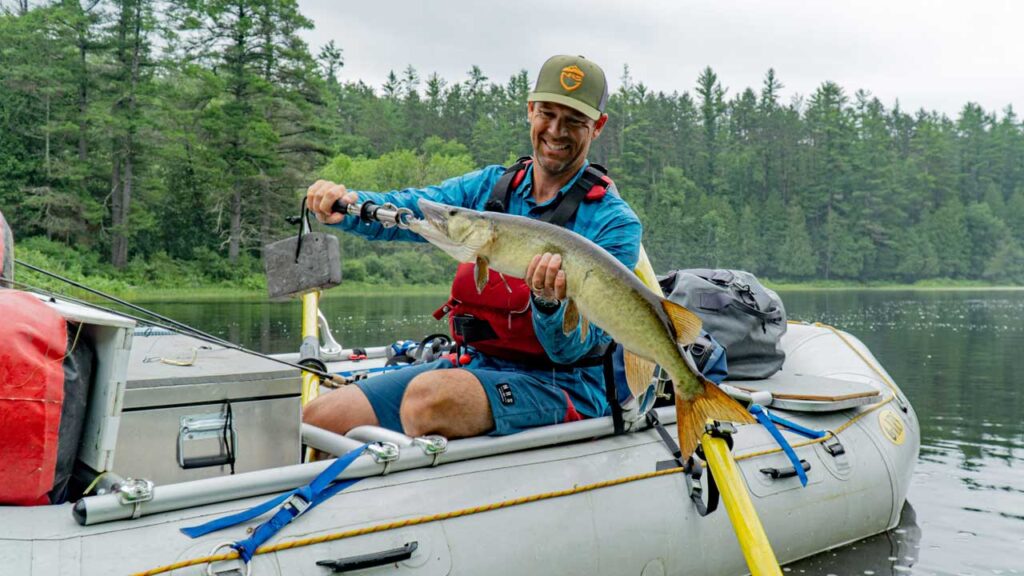
If I was in a raft (or a stable kayak like a fishing kayak) and saw some Class 1 rapids coming up, I wouldn't be concerned about head injuries. This doesn't mean that passing on a helmet is the right answer for all people in similar circumstances, it just means that's what I'm personally comfortable doing. Having said that, most boaters should wear a helmet in any whitewater to be safe.
Do I need a life jacket or personal flotation device (PFD)?
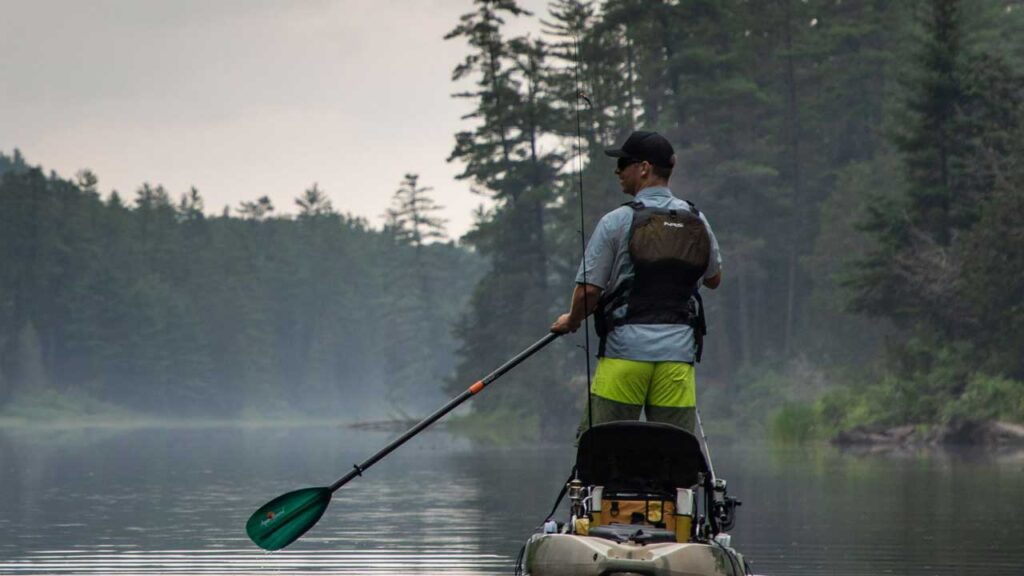
The bottom line (in my opinion, and according to many regional bylaws) is that if you're on the water, in any capacity, you need to wear a life jacket or PFD (personal flotation device).
PFD should warn when paddling
I know the dangers can seem non-existent when paddling a stable boat in calm conditions, but you never know when something unexpected might come along, flip you into the water, and cause some real issues. If you have a PFD on at all times, then any potential blips are nullified even further.
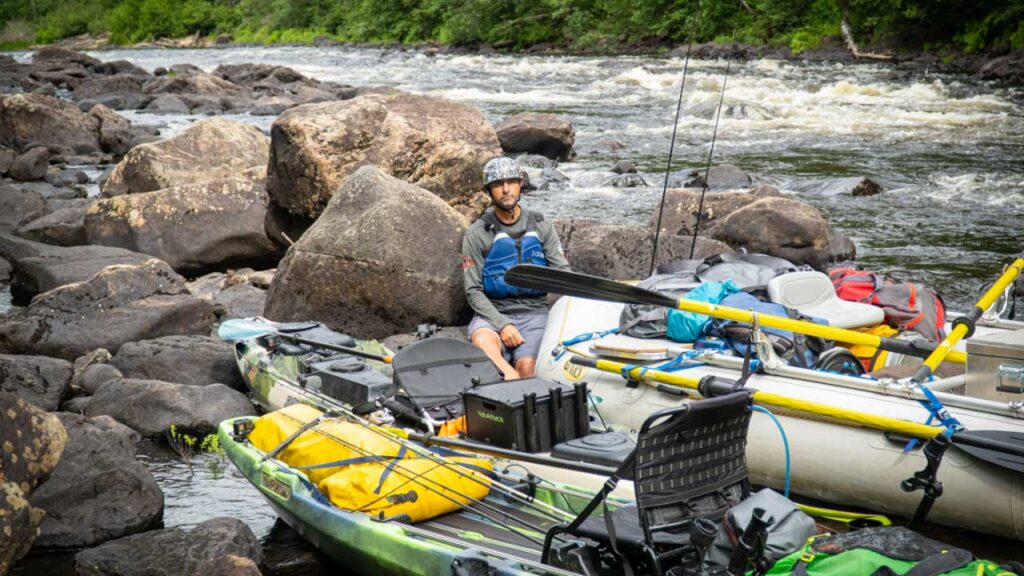
While a vest makes the most sense in most situations, strong swimmers on a stand up paddleboard may prefer an inflatable PFD. This is worn like a fanny pack, and activated by pulling the auto-inflate tab when needed. For more beginner SUP tips feel free to read: SUP Tips for Beginners – Top 5 Lessons and How to SUP – Beginner’s Guide to Paddle Boarding.
One other note on life jackets is that, given how slick and feature-rich they come these days, wearing one doesn't have to be a chore – it can be a bonus. I use the easy-access pockets to store my cell phone, sunscreen, chapstick, and any other little things that make sense to have on me while paddling. If you invest in a good PFD (that also fits well!), then you'll be more inclined to wear it.

Helmets: WRSI Current Helmet
PFDs: NRS Chinook, NRS Zen PFD, NRS Odyssey PFD
Paddles: Bending Branches Angler Pro
Sunglasses: Wiley X
So even though I support paddlers making their own judgment calls, I also recommend everyone use caution. If in doubt, wear additional safety gear. I think paddling current and whitewater is super fun, but there are real risks that shouldn't be taken lightly. I hope you're feeling confident and excited for your next river-running adventure. Stay tuned for more paddling tips, gear reviews, and episodes of Paddle Tales on PaddleTV.








